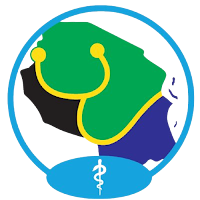HC@AIxIA: AI&Health Seminar Series (2024) - 16 September
Generative AI in sequencing: enhancing models by synthetic omics data
16 September 2024 - 04:30PM CET
Speaker: Giuseppe Jurman, Head of DSH (Data Science for Health) Unit, Fondazione Bruno Kessler – FBK (Trento, Italy)
Title: Generative AI in sequencing: enhancing models by synthetic omics data.
- Abstract: Synthetic data have recently gained momentum in several scientific areas as an effective solution to dealt with several aspects of data poverty and missingness. In translational medicine, biomedical images and EHR data have been the first to benefit from synthetic augmentation techniques through generative AI algorithms such as GANs or, more recently, Diffusion-like models. Extension of these methods to omics data poses further challenges due to the nature of the signal, such as the need of taking into account sample variability and multilevel omics coherence. In this talk, we will present an overview of the state-of-the-art of the synthetic data in the omics universe, including the generative methodologies, the future perspectives, and the related caveats, concluding with some applicative use cases. (joint work with Marco Chierici and Silvia Menchetti)
- Short Bio: Giuseppe Jurman is a mathematician, with a PhD in Algebra, currently Head of the Data Science for Health (DSH) Unit at FBK. His main interest is the development and the application of artificial intelligence, machine learning and complex network models for diagnosis, prognosis and prediction in medicine, life science and computational biology, starting from EHRs, omics data and biomedical images, including digital pathology, with a particular emphasis on reproducibility and explainability. He is also interested in scientific programming with Python and other computing languages, and he teaches Data Visualization at the M.Sc. in Data Science at the University of Trento.
- Flyer: link
- Link for participating: webex link + details
- VIDEO: available afterwards
(coordinators of the HC@AIxIA working group)



 orcid.org/0000-0002-0192-8965
orcid.org/0000-0002-0192-8965

